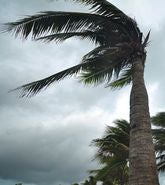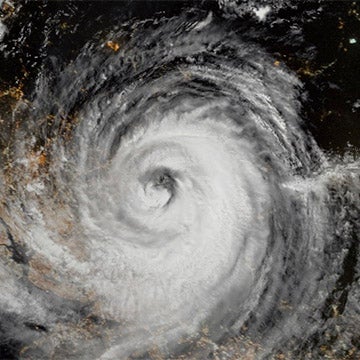The recently released Version 21 of the RMS® North Atlantic Hurricane Models provides our clients with the most current view of risk and resulting market conditions in the North Atlantic Basin, applicable at the point of underwriting through to portfolio management and risk transfer decisions.
RMS continues to invest in innovation throughout the region, including the incorporation of an unparalleled US$6 billion in new claims data from recent seasons for superior model calibration and validation. Plus, we’ve updated our event rates, both the historical long term rates and forward-looking medium term rates, with the latest statistics on recent hurricane seasons.
In addition to offering a consistent and correlated view of hurricane risk across all regions, RMS also provides flexible solutions to reflect sensitivities associated with evolving market conditions. One of these sensitivities includes the impact of recent changes to the Florida Building Code.
Impact of Changing Market Conditions
The 2017 Florida Building Code (FBC) clarified and extended the geographical scope of an existing rule on replacing damaged roofs, which previously applied mainly in the High-Velocity Hurricane Zones in South Florida (Miami-Dade and Broward Counties). An expanded version of the rule was codified to be applicable to existing buildings in the 2007 FBC, but its applicability, enforcement, and interpretation were sporadic at best due to the lack of notable landfalling hurricanes in Florida until the 2017 season. With the inclusion of this rule in the 2017 Florida Building Code (FBC-B and FBC-R volumes), the rule now applies to site-built structures across all counties in the state.
Known as the “25 percent roof replacement rule,” it stipulates that if more than 25 percent of a roof is “repaired, replaced, or recovered” in any 12-month period, then the “entire roof system” or “roof section” must be brought up to the latest Florida Building Code. In other words, even partial damage to the roof section, in one or more storms within a 12-month period, may necessitate the total replacement of the roof.
RMS is still monitoring the effects of this rule but based on initial assessments of more than US$3 billion in residential claims data from Hurricane Irma (2017) and Hurricane Michael (2018), we believe the impacts of this rule led to material increases in overall hurricane claims severity. Not only does a roof with just 25 percent damage have to be replaced in full, but the new roof would also have to comply with the latest building code requirements, which often lead to increased costs.
This is still a preliminary assessment as a significant portion of claims for Irma and Michael remain open, particularly in counties that experienced the impacts of this rule for the first time. Overall, more claims data is required to isolate the effects of other claiming and behavioral factors such as assignment of benefits (AOB), litigation, etc., and to solidify the quantitative impacts of the 25 percent roof rule.
New Alternative View of Vulnerability for Florida Residential Lines
Within the V21 North Atlantic Hurricane Models, alongside our reference view of vulnerability, RMS also offers a new alternative view of vulnerability that captures the potential impacts of the 25 percent roof rule based on what we know so far. This alternative view satisfies our interpretation of requirements with the Florida Commission on Hurricane Loss Projection Methodology (FCHLPM), the regulatory body that certifies catastrophe models for use in residential rate filing purposes in the state.
This alternative view reflects a vulnerability recalibration for Florida residential lines accounting for changes in claims behavior throughout Florida during the 2017–18 hurricane seasons. To facilitate sensitivity testing and change management processes, clients using the models can assess the sensitivity of their exposures relative to the RMS North Atlantic Hurricane Models reference view.
Innovation Is an Ongoing Process
As mentioned, RMS continues to examine the effects of the “25 percent roof replacement rule.” In doing so, we are actively engaging with the market to gather additional data to further verify the impacts of recent trends in hurricane claims and how they should be reflected in the model. We are also continually validating the initial assessment to ensure the model adequately reflects a consensus of market conditions and impacts.
Questions that we are asking include how much of the claims signal is permanent verses temporary, especially given new legislation on this topic, and to what extent is the increase in losses driven by social inflation factors. These factors could include, but are not limited to, assignment of benefits (AOB), use of public adjusters, coverage expansion, and generous policy interpretation due to the threat of litigation. RMS attempts to remove the impacts of social inflation from claims data, where possible, but recognizes the significant uncertainties given the lack of detailed information on these factors.
Let’s focus on the first factor, the rise in AOB, where a policyholder signs an agreement assigning the benefits of the insurance claim to a third party, such as a roofing company or a lawyer, who then seeks direct payment from the insurer. AOB agreements are not new – they have been in Florida for over a hundred years – but AOB lawsuits have soared. In 2006, there were about 400 AOB lawsuits. In 2016, they had risen to more than 28,000, and these were mostly related to non-hurricane water losses. However, this trend quickly spiraled out of control after the 2017–2018 hurricanes. As of October 2019, 40 percent of the 15,000 open claims for Hurricane Michael were related to either AOB, litigation, mediation, or arbitration.
Looking at Irma and Michael claims where AOB was a significant factor, claims severity increased by three times on average. Although new Florida statues adopted in July 2019 look to close AOB loopholes, there is still significant uncertainty if and how these new laws will minimize future impacts. Rulings on interpretation of insurance policy terms from both the U.S. and Florida Supreme Courts can also open new opportunities for AOB and litigation.
Overall, the recent trends in claiming practices, code changes, and social inflation factors do have bottom-line impacts for residential insurers in Florida. The new alternative vulnerability view in the North Atlantic Hurricane Models V21 yields higher losses relative to the reference view, especially for single-family dwellings and low-rise, multi-family dwellings where roof value reflects a higher proportion of the structure’s total insured value.
Solutions to Respond to Complex Challenges
When considering vulnerability assessment, there is an argument whether changing market practices require us to move from a physics-based damage-and repair-estimate methodology to a litigation and human behavioral claim payout model. In this context, RMS continues to work with all parties to establish clarity and provide flexible, customizable views of risk to help clients understand the sensitivities behind any selected view, and/or generate their own view of risk if desired. In this way, we ensure clients are prepared to face evolving market changes within and across regions at risk of hurricane damage.
The North Atlantic Hurricane Models V21 help clients develop views of risk to better respond to changing market conditions and dynamic hazards. Also, they are compatible with the RMS Climate Change Models, which empower you to address near- and long-term challenges posed by climate change. To learn more about these models, please contact your client success representative or email info@rms.com.








